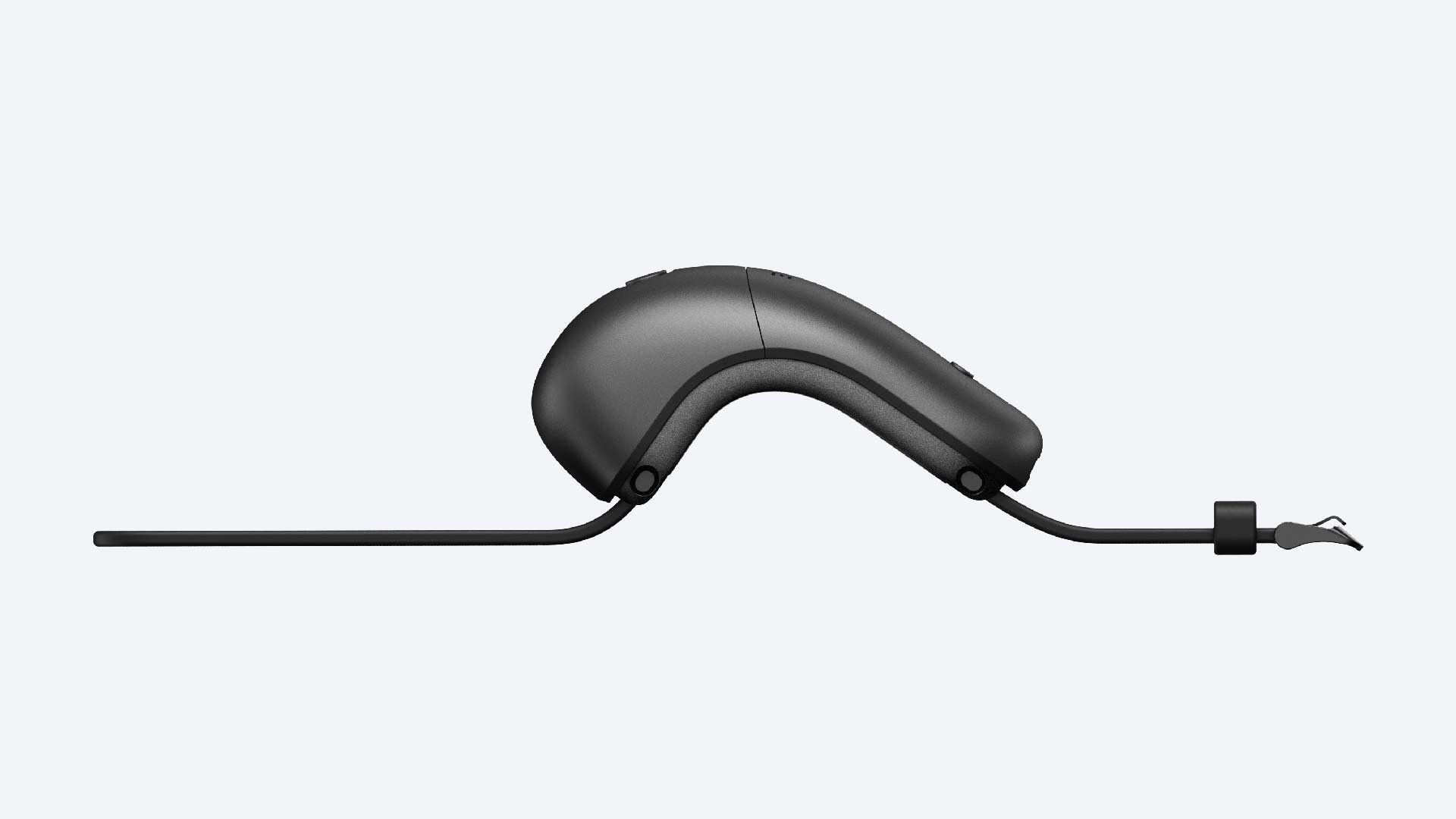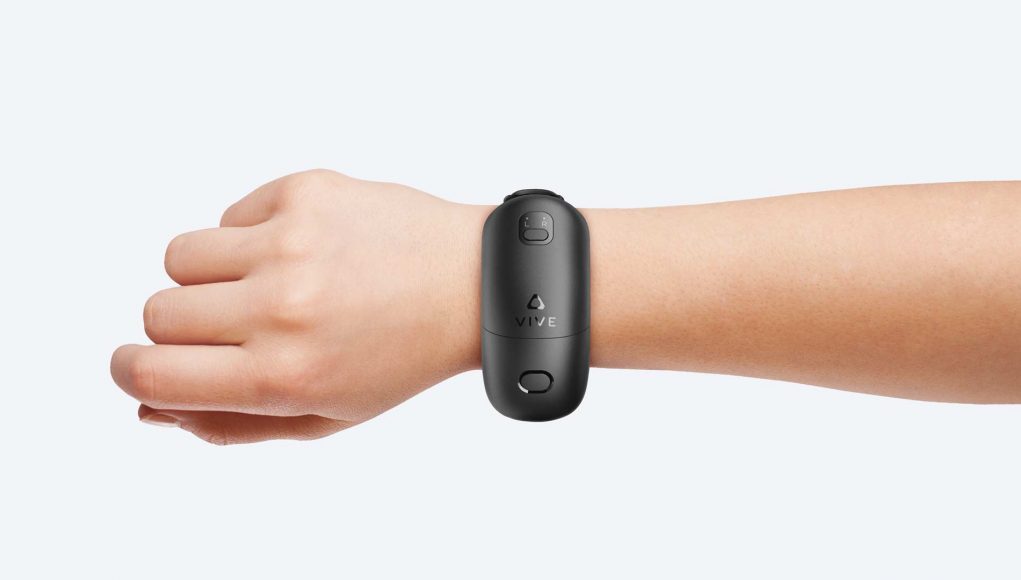HTC unveiled a new VR tracker device at CES 2022 today, this time targeting its $1,300 enterprise-focused standalone headset, Vive Focus 3. It’s slated to go on sale sometime early this year, starting at $129.
Unlike its SteamVR-compatible Vive Tracker, the new Vive Wrist Tracker is a wrist-worn device which hooks into Vive Focus 3’s inside-out tracking system. It does this essentially the same way the headset’s controllers are tracked in room-scale space, i.e. through infrared LEDs that are tracked optically through the headset’s onboard camera sensors.
HTC says in the announcement that the tracker allows users to either strap it to their wrist for what the company calls “advanced hand tracking” in addition to using controllers, or to objects like gun controllers, Ping-Pong paddles, or tools.
Below you can see a Nerf gun has been rigged up with Vive Wrist Tracker, making for a 6DOF-tracked virtual weapon:
The company says Vive Wrist Tracker is 85% smaller than Vive Focus 3’s controller, and 50% lighter at 63g. It boasts up to four hours of constant use, charged via USB-C. HTC says it includes a simple one-button pairing feature for wireless connection, and also features a removable strap for easy cleaning.
As for its more accurate hand tracking, this is what the company says in Vive Wrist Tracker’s announcement:
“When user wears the tracker on the wrist, we can predict the tracker’s motion trajectories even when the tracker is out of camera’s view in a while by using high-frequency IMU data and an advanced kinematic model. With this technology, we can predict their hand position when the hands leave the tracking camera view.”
Road to VR skipped the physical bit of CES 2022 this year, however we’re very interested to see the wrist tracker in action to see if it makes a material difference in terms of hand tracking.

Likely its biggest appeal is the ability to track objects, giving location-based entertainment venues and enterprise users the ability to avoid the typical mixing and matching of hardware ecosystems, such as OptiTrack or SteamVR base stations. To boot, HTC says its releasing CAD files so prospective owners can build custom docking solutions or harnesses around the tracker.
HTC is initially launching Vive Wrist Tracker in the US starting early 2022, priced at $129/€129/£119. Although they haven’t said as much, that pricing means it will very likely roll out Vive Wrist Tracker to the UK and EU at a later date.
In addition to Vive Wrist Tracker, HTC unveiled a few other Vive Focus 3 accessories, including a new charging travel case and a multi-battery charging dock. It’s not clear when either of those will go on sale, or for what price. We’ll be keeping an eye on the Vive accessories product page in the meantime.







